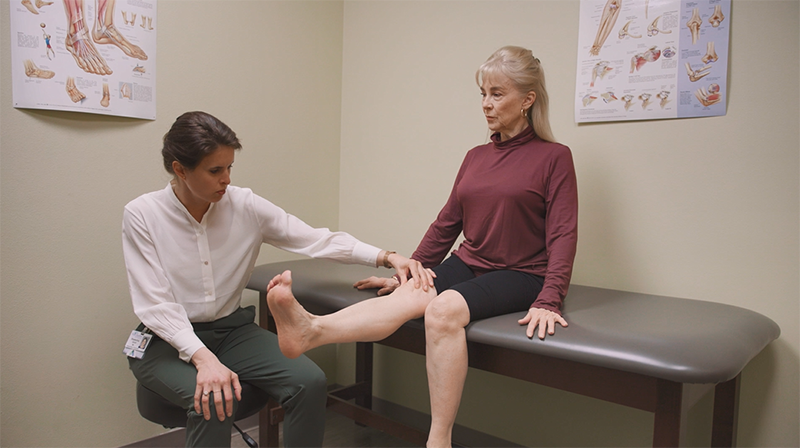
WHAT IS CARTILAGE?
Hyaline cartilage, also known as articular cartilage, is the smooth white tissue that lines the ends of bones to form joints. Healthy hyaline cartilage allows our joints to move easier with very little friction.
When this cartilage is damaged either by injury or wear and tear, the joint surface may no longer be smooth causing joint pain and difficulty moving.
SIGNS OF CARTILAGE DAMAGE
You can damage your cartilage through a traumatic injury or by years of use causing an overuse injury.
Cartilage does not have any nerves and very little blood supply so, when the hyaline cartilage is torn, the pain you are feeling is a result of bone-on-bone rubbing, not the tear itself. Here are a few symptoms of damaged cartilage:
- Pain in your joint
- A “catching” or “locking” sensation in the joint
- Swelling
- Difficulty straightening and bending the joint
- Instability
WHAT IS ARTHRITIS
Osteoarthritis
This condition is also known as “wear-and-tear” arthritis as it destroys the outer covering of the bone. As the cartilage wears away, it becomes frayed and rough causing the bones to rub against each other and resulting in a lot of pain. Osteoarthritis is most commonly found in people over the age of 50.
Rheumatoid Arthritis (RA)
Unlike osteoarthritis, which can occur in a single joint, rheumatoid arthritis usually affects the same joint on both sides of the body. RA causes the lining in your joints to swell which results in pain and stiffness in the joint. Known as an autoimmune disease, RA attacks the immune system causing damage to cartilage, ligaments, and softening bone.
Posttraumatic Arthritis
Posttraumatic Arthritis is a form of osteoarthritis caused by a traumatic injury such as a fracture or dislocation of the shoulder.
SIGNS OF ARTHRITIS
- Joint pain
- Stiffness
- Swelling
- Joint warmth
- Redness
TREATMENT FOR ARTHRITIS AND CARTILAGE DAMAGE
When a patient is ready to address their arthritis cartilage damage pain, treatment will first be approached from a nonsurgical standpoint. The orthopedic doctors at The Center have a number of different non-surgical options they will first discuss with their patients and have them try before considering surgical treatment options. These include physical therapy, injections, medication, etc.
Should pain reach the point of disability for a patient and non-surgical treatment is no longer effective, a doctor may recommend surgery to help restore function. As with all surgeries, there are some risks. Your doctor will discuss the possible complications with you before your operation.





